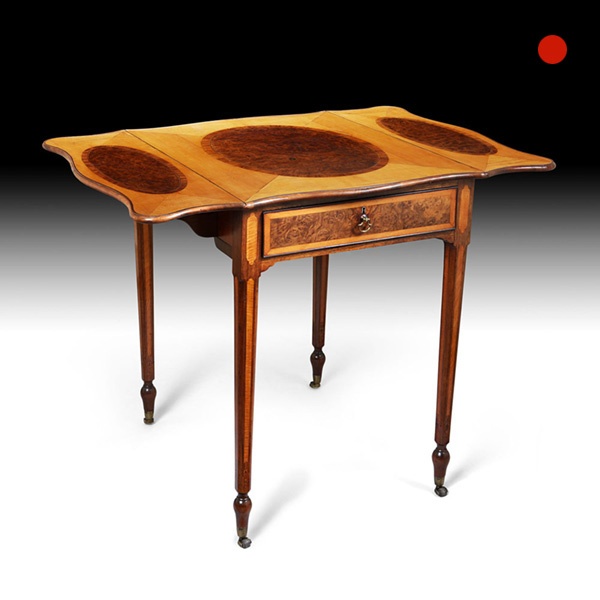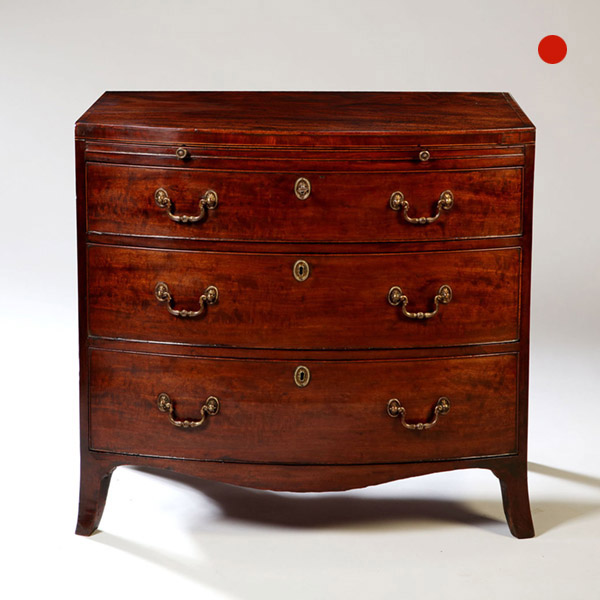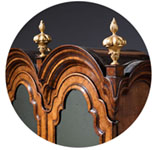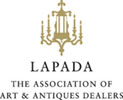Museum Grade George I Cocus Wood Card Table, Circa 1725. England
£32,000
Follow Us
Museum Grade George I Cocus Wood Card Table, Circa 1725. England
Museum Grade George I Cocus Wood Card Table (Partridge).
English Circa 1725. The folding top with outset rounded corners and banded in quarter veneered parquetry top above a shaped frieze with hinged folding concertina action to the back legs to hold the top open with dished outset corner coasters and indented counter pockets lined in burgundy baize. The table is raised on lappet carved and turned solid cocus legs terminating on pad feet.
The card-table is veneered with cocus wood, a hard dense wood with dark brown heart and yellow sapwood, often referred to, erroneously, as laburnum. It was imported from the West Indies and was often known as West Indian ebony. It was used between 1660-1740 and in the present instance a section of focus wood has been sawn lengthways to provide a decoratively striped veneer which has been laid in quarters on the table top.
See Bowett, Myths of English Furniture History: Laburnum Wood Furniture’, Antique Collecting, June 1998, pp.22-23) Illustrated in Dictionary of English /Furniture (1954), Vol.3, p. 188, Fig.10.
Condition
Good. Wear consistent with age and use.
Dimensions
Height: 29.14 in (74 cm)
Width: 33.86 in (86 cm)
Depth: 17.33 in (44 cm)
PREVIOUSLY SOLD

18th Century George III Satinwood and Pollard Oak Pembroke Occasional Table
An exceptionally fine and rare George III satinwood and pollard oak Pembroke table. The padauk top is veneered in satinwood cantered by large ovals of tightly clustered burr pollard oak reserves, bordered in princess wood and lined with fine ebony and box stringing.

George III Sheraton period bow-fronted caddy topped mahogany chest of drawers
A fine George III Sheraton period bow-fronted mahogany chest of drawers with brushing slide. The chest has the perfect time aged colour to its original wax finished surface and has truly commendable proportions. I love everything about this outstanding and original piece.

18th Century George III Satinwood and Pollard Oak Pembroke Occasional Table
An exceptionally fine and rare George III satinwood and pollard oak Pembroke table. The padauk top is veneered in satinwood cantered by large ovals of tightly clustered burr pollard oak reserves, bordered in princess wood and lined with fine ebony and box stringing.

George III Sheraton period bow-fronted caddy topped mahogany chest of drawers
A fine George III Sheraton period bow-fronted mahogany chest of drawers with brushing slide. The chest has the perfect time aged colour to its original wax finished surface and has truly commendable proportions. I love everything about this outstanding and original piece.
YOU MAY ALSO LIKE
No Results Found
The page you requested could not be found. Try refining your search, or use the navigation above to locate the post.
No Results Found
The page you requested could not be found. Try refining your search, or use the navigation above to locate the post.













